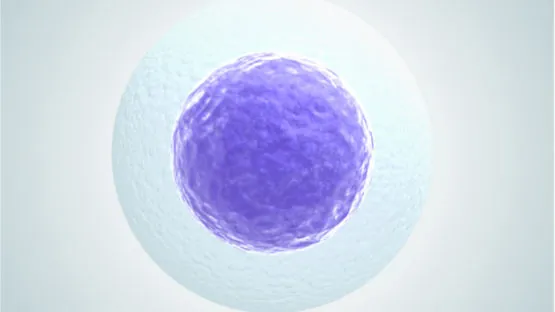Researchers have discovered that a lack of NAD+ is responsible for mitochondrial dysfunction in egg cells (oocytes), leading to decreased fertility with age.
Mitochondria in oocytes
Given how much it must divide to create a human being, the oocyte is the largest cell in the human body, and it contains far more mitochondria than any other cell as well; most cells have a few hundred or thousand, and the oocyte contains a hundred thousand. The mitochondria are the powerhouses of our cells, and it is no surprise that the oocyte requires a considerable amount of power.
This also means that mitochondrial dysfunction, one of the hallmarks of aging, has a significant effect on these cells. In a new paper, researchers hypothesize that increased reactive oxygen species (ROS) production by damaged mitochondria leads to genetic dysfunction in oocytes, leading to infertility and other problems.
The role of NAD+
Nicotinamide adenine dinucleotide (NAD+) is a topic that we have covered extensively, as it is responsible for many critical functions in our cells. As NAD+ has been shown in previous work to improve mitochondrial function in other cell types [1], the researchers decided to see if it would improve the function of oocytes as well.
To test this hypothesis, they chose to administer nicotinamide riboside (NR), a well-known precursor of NAD+, to 8-month-old female mice. Mice of this age that had been given NR for four months had their NAD+ increased substantially over ordinary 12-month-old mice, and multiple other metrics, including follicle number, ovulation potential, oocyte count, ovary size, and litter size, were improved as well. However, administration of NAD+ did not fully return such fertility-related metrics to those of 2-month-old mice.
While such things have been covered in previous research, this study highlights the role of the mitochondria in the viability of oocytes. Supplementation of NR was shown to promote healthy mitochondrial function, as it increases mitophagy, the process by which damaged mitochondria are destroyed in order to leave room for healthy mitochondria, and increases the expression of genes responsible for mitochondrial development.
Abstract
Loss of follicles together with decreased oocyte quality and quantity contribute to age-associated ovarian senescence and infertility. Although underlying mechanisms for ovarian senescence are still unknown, mitochondrial dysfunctions have been reported. Here, we showed age-dependent decreases in ovarian Nicotinamide Adenine Dinucleotide (NAD+) levels in mice whereas supplementing aging mice with nicotinamide riboside (NR), an NAD+ precursor, increased ovarian NAD+ content. We found that increases in ovarian NAD+ levels in aging mice led to increased number of ovarian follicles and ovulatory potential as well as increased live birth rate. NR supplementation also reduced levels of reactive oxygen species and decreased spindle anomalies in aging oocytes, together with increased mitochondrial membrane potential (??m) and decreased mitochondrial clustering. In addition, NR supplementation improved ovarian mitochondrial energy metabolism. Our data suggested that supplementation with NAD+ precursors in vivo and in vitro could be potential therapeutic approaches for treating age-related ovarian infertility.
Conclusion
This study builds upon previous research, making it clear that NAD+ plays a critical role in aging at the cellular level. However, this is a mouse study, and the effects of NR, or any other precursor of NAD+, on human fertility have not yet been tested. Furthermore, more research is, as always, needed to analyze the upstream causes that lead to the depletion of NAD+ as we age and what interventions are effective against them.
Literature
[1] Zhang, H., Ryu, D., Wu, Y., Gariani, K., Wang, X., Luan, P., … & Schoonjans, K. (2016). NAD+ repletion improves mitochondrial and stem cell function and enhances life span in mice. Science, 352(6292), 1436-1443.




